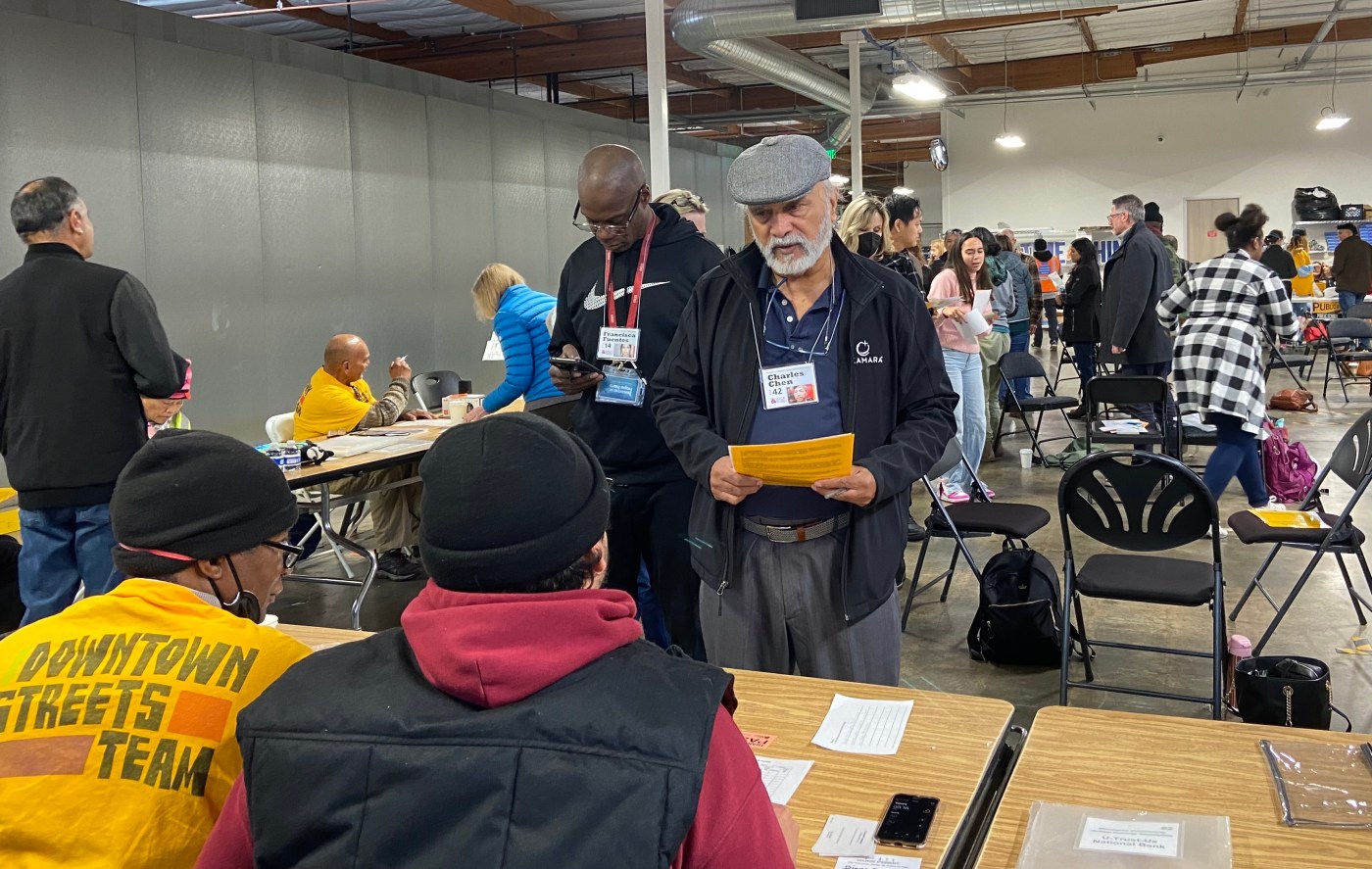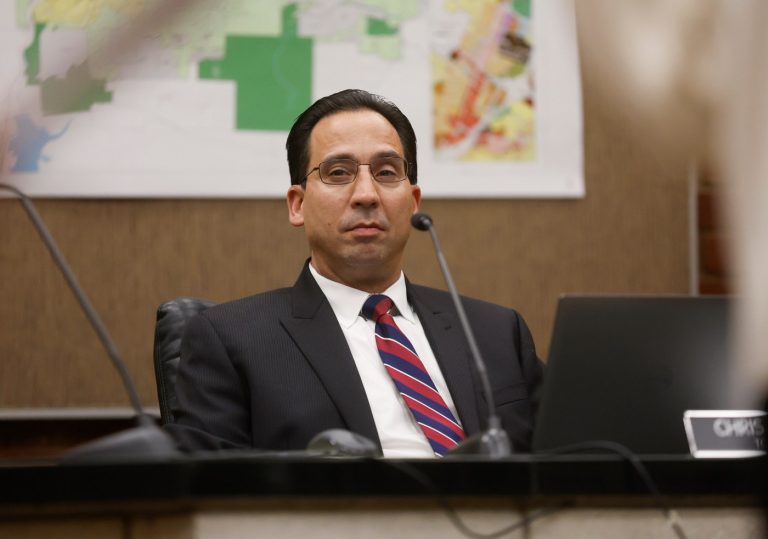SUNNYVALE — Nolan’s family is falling on hard times.
The 36-year-old shares a three-bedroom house in the Bay Area with his wife, 15-year-old daughter, and father-in-law who has partial paralysis. The family lives off of food stamps, while Nolan, the breadwinner, works 40 hours a week — only to make $1,360 a month.
The modest paycheck barely covers their monthly expenses, which includes various utilities, a mortgage and car loan.
“I’m just trying to keep a roof over our heads,” Nolan said.
Fortunately in this case, the family’s dire situation doesn’t exist. And neither does Nolan.
The scenario was used as part of the Sunnyvale Community Services’s (SCS) annual “poverty simulation,” a role-playing event where local participants imagine themselves in the shoes of local families facing food and housing insecurity.
About 60 residents from Sunnyvale, Mountain View and other nearby cities gathered in the service’s northern Sunnyvale headquarters Friday to participate in the day-long affair. The organization specifically encourages business leaders, city officials and those enrolled in local leadership classes to take part in the simulation, said Marie Bernard, executive director of SCS.
SCS is a nonprofit emergency assistance agency that serves residents living in Sunnyvale and the wider Santa Clara County. Almost all of their clients live below the county poverty level.
The agency has been running the poverty simulation for 12 years with help from the Downtown Streets Team, a local nonprofit that provides support and resources for people experiencing homelessness.
In Santa Clara County, roughly 7.8% of people live below the poverty level and a four-person household making $137,000 a year or less is considered low income. One in four people are at risk of hunger and 9,903 individuals are experiencing homelessness, according to county data.
Simulation participants were all given new identities and tasked with undergoing four 15-minute scenarios, with each time slot representing a week filled with unpredictable challenges and tasks.
“You could almost lift them from our case files,” Bernard said. “Poverty knows no boundaries, there’s no way you can say it’s a Sunnyvale problem or Mountain View problem.”
For instance, longtime SCS volunteer Alan Herrmann’s character Nolan usually worked during the day, but had to call out and deal with a last-minute babysitting gig.
“I’m babysitting two minors,” he said, gesturing to his pretend teenage daughter and her friend. “We also had to forgo groceries this week.”
Members from the Downtown Streets team acted as institutions in the simulation, including public schools, jails, employers, banks and healthcare providers, that their clients regularly interact with.
Herrmann was careful to watch out for Robert Coluter from the team, who role-played as a sheriff in charge of manning “CPS Jail,” a designated area monitored by Child Protection Services where minors could be sent to if left without adult supervision.
“If you leave them alone that could be a problem,” Coluter said, sporting a mini fake sheriff’s star. “They could have friends throwing a party, get caught and put in jail .. the parents will have to pick them up, and they don’t need that right now.”
Meanwhile, life was looking up for Sheri Pereira, who played a woman from a low-income household looking for work. She and her fake boyfriend were able to find jobs, and are figuring out how to shop for essentials in-between shifts.
“There’s not enough time in the day to get things done and take care of the family,” Pereira said, while filling out a fake employment form.
Pereira, who works for El Camino Health, heard about the simulation through Leadership Mountain View, a community and civic leadership program. ‘It’s a great event,” she said.
Tara Martin-Milius, executive leader for Leadership Sunnyvale, said the simulation is an important way for people to learn how to support low-income community members.
“I think this a critical thing for people,” said Martin-Milius, said. “They can say, ‘Now I have a better understanding of what it’s like, and how I can help.’”












